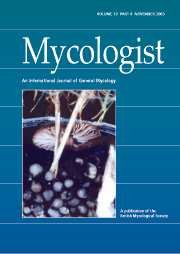Article contents
Paracoccidioides brasiliensis – the man-hater
Published online by Cambridge University Press: 15 August 2002
Abstract
Some fungi are found only in specific geographical regions. The human pathogen Paracoccidioides brasiliensis has only rarely been isolated in nature and incidences of infections are restricted to Central and Southern America. Most commonly infected individuals are not urban dwellers, but rather farmers and people living in mountainous areas. In addition, it is almost invariably males who are infected. The gender bias has been reported as between 10 - 20:1 males over females! A possible explanation for this astonishing and unique phenomenon is given below. P. brasiliensis is the causative agent of paracoccidioidomycosis, a human systemic mycosis for which the portal of entry of the fungus is via inhalation of air-borne propagules into the respiratory tract. After entering the host, the fungus converts spontaneously to its yeast form, a fundamental step for the successful establishment of the infection.
- Type
- Research Article
- Information
- Copyright
- © 2002 Cambridge University Press
- 1
- Cited by




